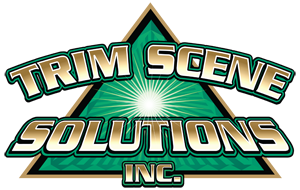We’ve all been hearing a lot about hemp since the passing of the Farm Bill this last December, but do we want it growing in our backyards? Absolutely!
First off, this isn’t your grandpa’s hemp. Up until the discovery in 2010 of the healing Cannabinoid CBD by Southern Humboldt Cannabis Farmer Lawrence Ringo, hemp was largely grown for fiber and hemp seed oil. Fiber and seed oil producing varieties are grown from seed, with male and female plants left together in the field to pollenate each other. Clouds of pollen from these fields are known to travel great distances and are a risk to growing seedless cannabis crops in those regions. That being said we definitely don’t want Hemp fiber or seed production in the hills of the North State.
Thankfully for the prized sinsemilla crops of the Emerald Triangle modern day Hemp farming is focused on the production of the cannabinoid CBD and not the ropy fiber of its stalks or seed.
The Farm Bill categorized Hemp as any cannabis plant that has less than 0.3% THC. Modern day CBD hemp farmers grow their crops from clones or feminized seed that only make female plants and pose no risk of pollen drift. They are trying to produce as much CBD per acre as possible. Just like sinsemilla farmers these CBD farmers don’t want male plants dropping stray pollen and bringing their crops value down. Most CBD Hemp is harvested as a whole plant, chipped or bailed and sent off to large extraction facilities around the US to remove the valuable cannabinoids like CBD. The isolate of which is then put into every type of product imaginable, topicals, tinctures, pet treats, drinks, beauty products, foods and more.
You need a lot of acreage to profitably produce a Hemp crop for CBD oil production. Flat farm land. Not something we have a lot of in the Emerald Triangle. Thankfully CBD hemp is being produced in another capacity. To smoke! Most of the modern day CBD Hemp strains are offspring of Laurence Ringo’s strains. That means they are dank flowers. They look like dank weed, smell like dank weed, and smoke like dank weed with a medicinal effect instead of a recreational one.
These CBD Hemp strains are being grown, harvested and processed the same way we have been processing our high THC strains in the Triangle for decades. The dried processed flower is sold as pre rolls, packaged 1/8s, ounces and bulk pounds. Often times at a higher price than we see from California’s Retailers. Stores selling CBD have been popping up all over the US and internationally. A friend visiting Washington DC over the holidays sent me a message that there was a CBD store “on every corner”. Envision a future with health conscious hipsters smoking CBD pre-rolls as an alternative to cigarettes. It’s already happening and the highest quality product can be cultivated where it’s always been grown. The Emerald Triangle.
So what opportunity does this present to the Farmers of our community? The biggest one is that we can build internationally recognized brands today! We can grow smokable CBD Hemp, trim it, cure it, and package it as we have always done and then sell it on shelves across the US and Internationally. It will undoubtedly be many more years before we are able to do this with our high THC crops. For the many Traditional Market farmers who have resisted licensing this could be another opportunity to continue farming and bring their operations into compliance.
How do we lose this opportunity? The same way we are losing out on participation in the states THC cannabis market. Over-regulation on the local and state level. Mendocino has just passed a moratorium on Hemp farming while they research how best to move forward and Humboldt is on the fence as well. We need to help educate our local officials and farming community on this lucrative opportunity before it blows past us like pollen on the wind.
Joey Burger
“The Humboldt Local”
President
Trim Scene Solutions, Inc
Search
+
